When a Storm is Brewing: A Plano Resident’s Guide to Barometric Pressure Migraines
Living in Plano, you know the weather changes. Sudden storms and fronts cause barometric pressure migraines. Get help for the headaches and throbbing pain.
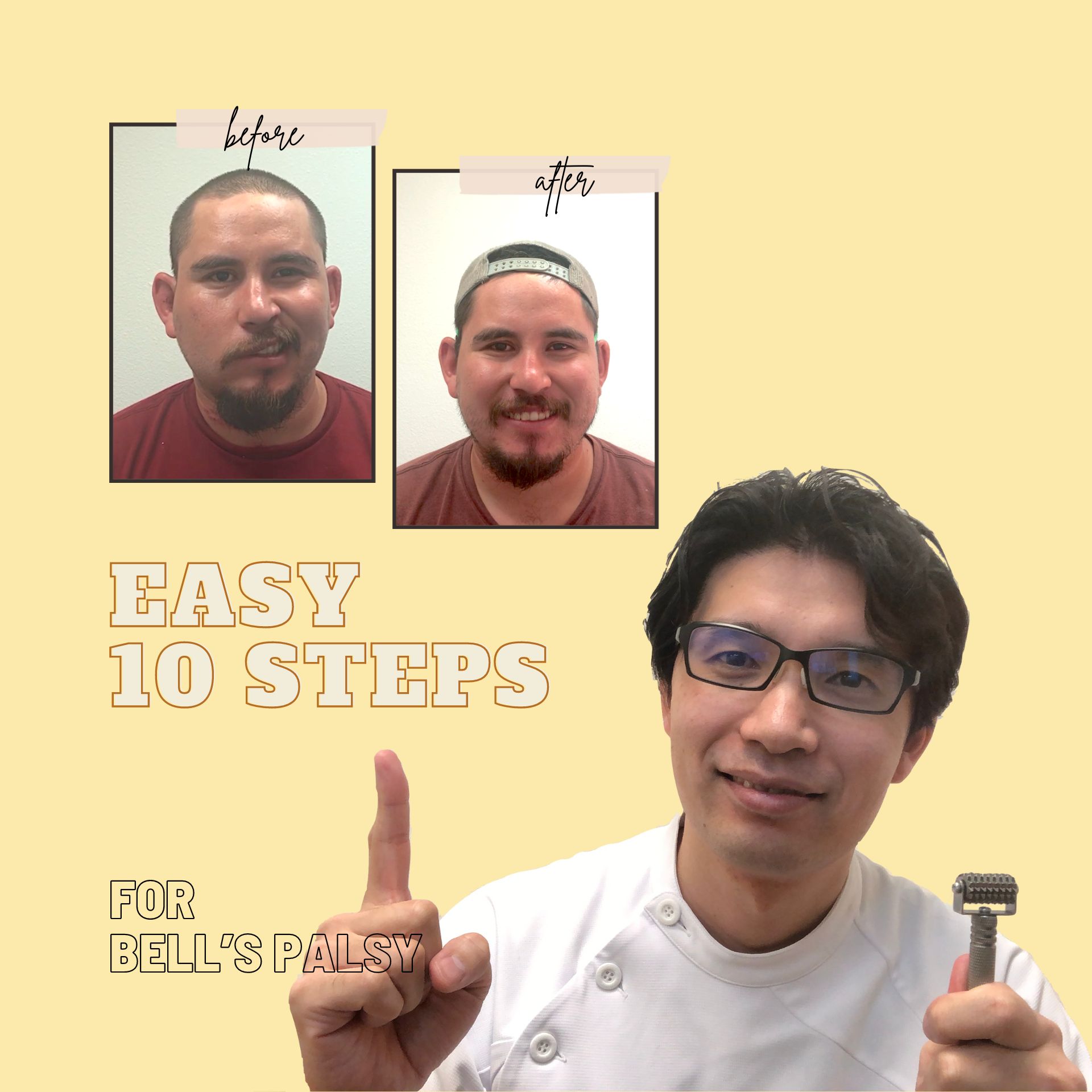
December 9, 2025
Hello there! Satoru here from hariQ acupuncture & herbs. In this blog, I am excited to share with you an excellent home remedy that can help alleviate symptoms of Bell’s Palsy. By following these 10 simple steps, you can learn how to use a facial roller to improve your condition.
I understand how difficult and frustrating it can be when half of your face suddenly droops and stops moving. It’s common to assume you’ve had a stroke and rush to the emergency room, only to be diagnosed with Bell’s Palsy, a condition you may have never heard of before. You might have been prescribed steroids and antiviral medication, and your doctor may have advised you to wait and hope that your symptoms will eventually disappear.
If you’re dealing with Bell’s Palsy, it’s crucial to act fast and take control of the healing process. Every moment counts when it comes to this condition, and the quicker you take action, the better your chances of avoiding unwanted side effects and complications. That’s why you should start using the facial roller exercise right away to help speed up your recovery and ensure you get back to feeling like yourself as soon as possible. Don’t let Bell’s Palsy keep you down for long – with the right approach, you can overcome it and come out stronger on the other side.
We understand this can be a lot of information and overwhelming: if you are looking for more support and answers, set up a free consultation with our Bell’s Palsy Specialist, Satoru Ozawa. Share your story, get your questions answered, and learn how you can set yourself up for tremendous success in achieving a healthy life.
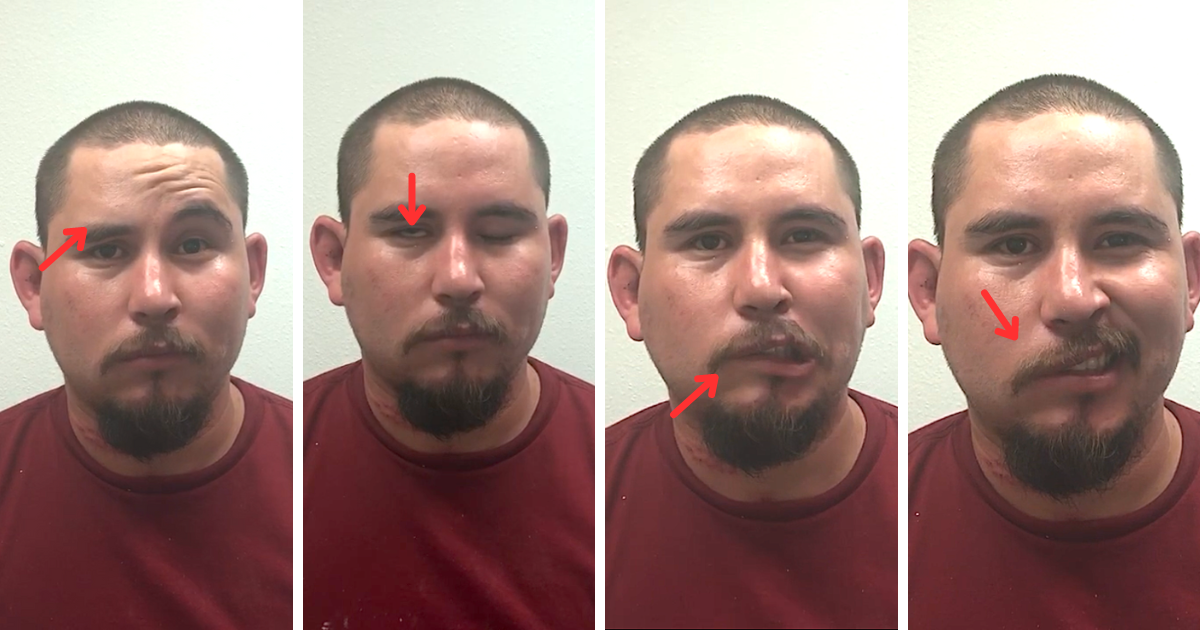
Bell’s palsy is a medical condition that affects only one side of your face, causing paralysis. This results in a drooping mouth, inability to close your affected eye, raise your eyebrow, a frown face, smile, and other symptoms. These symptoms occur when the facial nerve is damaged or swollen, preventing it from signaling the facial muscles to move.
Bell’s Palsy is a condition that affects many people, but its exact causes are still unknown. What we do know is that viral infections like herpes simplex have been linked to this condition. These infections can have a negative impact on the face, causing symptoms of Bell’s Palsy. However, it is important to note that this is just a theory and has not been confirmed as the definitive cause. In fact, there are cases where individuals have developed Bell’s Palsy symptoms without any viral infection. We need more research to truly understand the root cause of this condition.
From my observations, a considerable number of my patients have encountered stressful situations or have been exposed to windy conditions. Even before the onset of Bell’s Palsy, some of them have already complained of ear, neck, or headache on the back of the ear. This indicates to me that their immune system might be weakened, which can make them more vulnerable to getting Bell’s Palsy.
In the majority of cases, Bell’s Palsy patients can expect to recover their facial function to a normal or almost normal level – a promising statistic of about 85%.
However, it’s important to be aware that a small percentage of patients, approximately 4-6%, may experience significant facial muscle deformity. Unfortunately, this deformity may be irreversible, and the patient may not be able to return to their previous appearance. Moreover, around 10-15% of patients may experience recurrent Bell’s palsy, which can be either on the same or opposite side of their face. It can be a frustrating or annoying side effect for those patients.
To help recover your Bell’s palsy, I recommend using a facial roller to stroke in 10 specific directions. These directions typically involve upward strokes with a certain amount of pressure in order to elevate your droopy face. These directions are based on traditional Chinese medicine and follow the meridians and channels outlined in the ancient Chinese textbook “Huang Di Nei Jing Su Wen & Ling Shu”. The book states that stroking along the meridians can be beneficial for facial paralysis, and this technique has been used for centuries and is still considered beneficial today.
Facial muscles are very unique because they attach to your facial skin, unlike other muscles which attach to tendons and bones, such as your biceps muscles. Facial muscles control your facial expressions, and they are attached only to the skin. This is why using a facial roller to stimulate the skin can also stimulate the facial nerve and muscles, helping to speed up the recovery process.
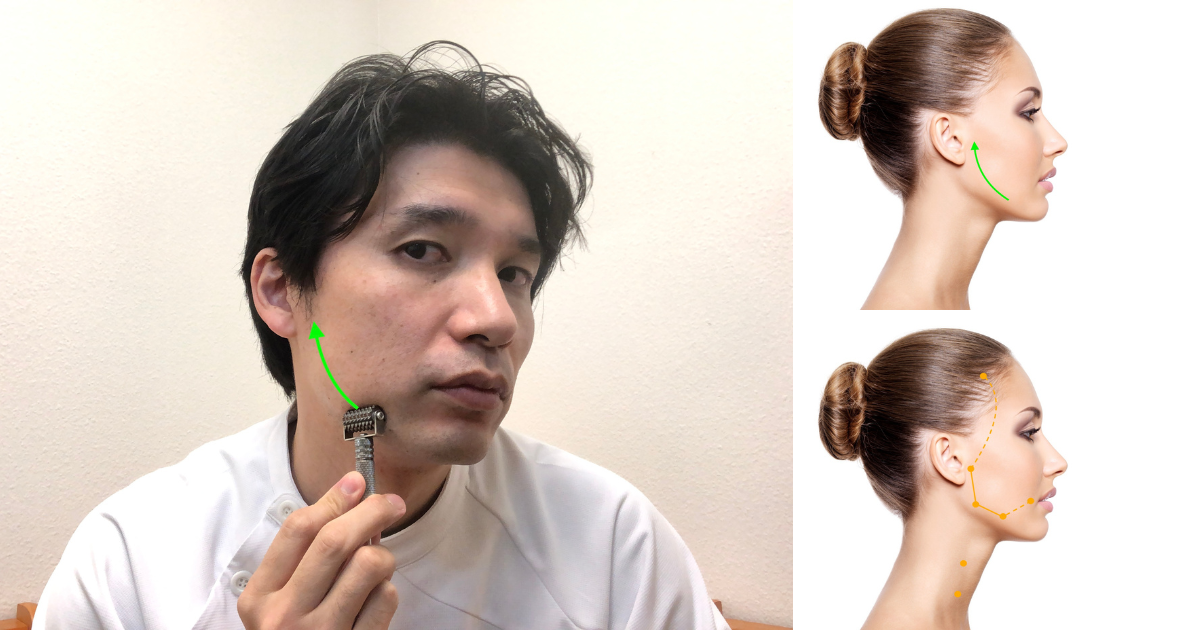
There is the first line that runs in front of your ear, from your jaw to your ear. This line follows the stomach meridian and moves upwards. The starting point of this line is just below the attachment of your masseter muscle, which contracts when you bite your teeth. The line then runs up to just in front of your ear. It is recommended to stroke this line upwards 5-10 times, while applying gentle pressure to lift up your skin. However, it is possible to experience pain in this area. If you feel tenderness when touching this area, you can skip this step.
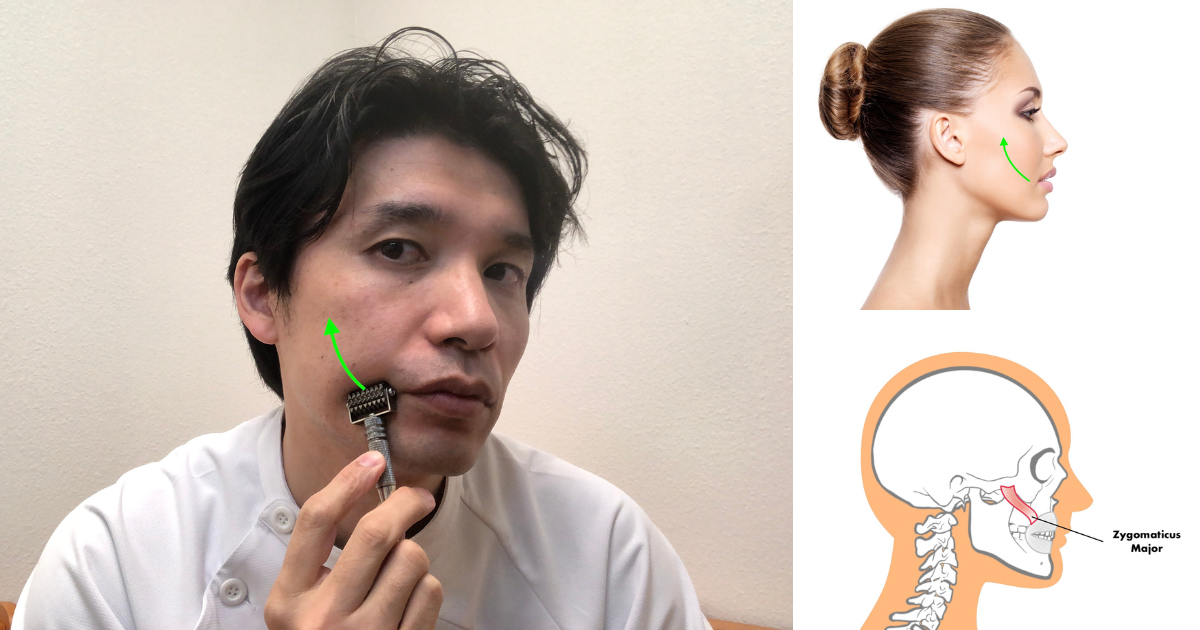
The second line, running from your jaw to your cheekbone, stimulates the zygomaticus muscle, which is the major muscle responsible for your smile. Applying enough pressure to raise your skin up and stroking it 5 to 10 times. While there’s no meridian pathway along this line, it’s still an essential step to help your smile. However, if you experience any pain or discomfort, you can always skip this step and move on to the next line.
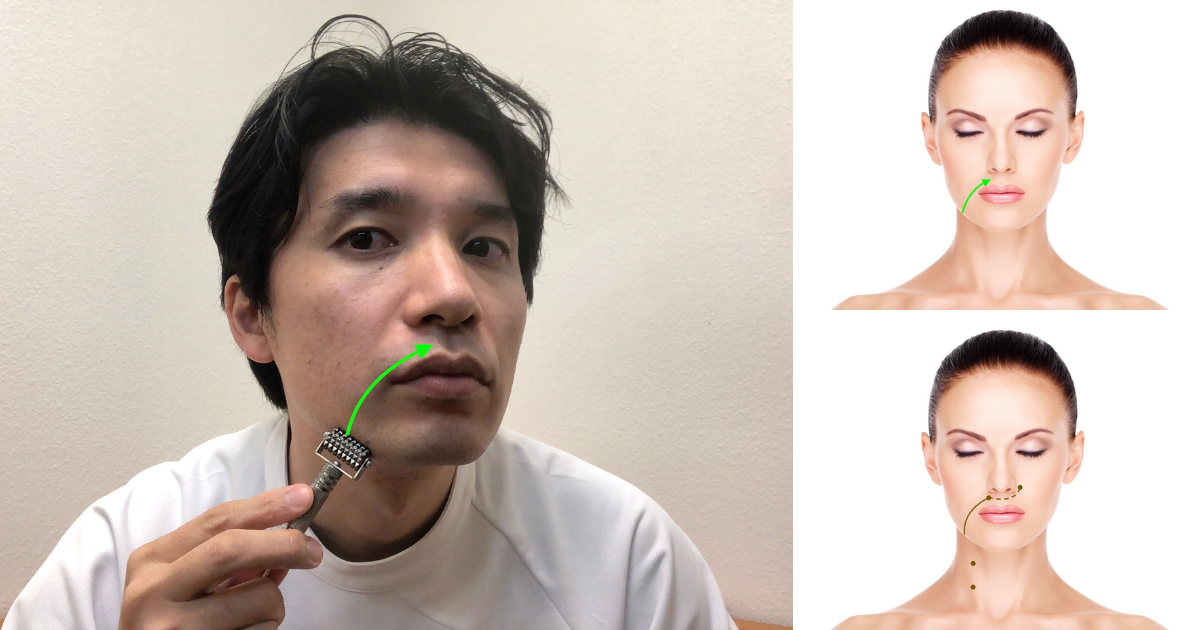
Your third line, formed around the corner of your mouth, is incredibly important. This line follows the Large Intestine meridian, which travels from your chin to your upper lip. If you struggle to move your mouth, it’s even more crucial because most of your facial muscles attach to the corner of your mouth. So, make sure to stroke the area 5-10 times in an upward direction, applying enough pressure to raise your skin. This simple step can make a significant difference in your facial expression.

Although the fourth line is also not located in the meridian, I have observed that many Bell’s palsy patients experience difficulty lowering their mouth downward. This is controlled by the depressor labii inferioris and depressor anguli oris muscles. Therefore, to help alleviate this issue, you can place the facial roller on your chin and stroke it towards your lower lip 5 to 10 times, making sure to apply enough pressure.

The fifth line of this technique is located around the corner of your nostrils and goes up to. This line also runs along the Large Intestine Meridian, and it can help to stimulate your nostrils to open up more. This is also beneficial for people who have a clogged nose or trouble breathing through their nose. Please apply gentle pressure and stroke this area for 5-10 times to experience its benefits.
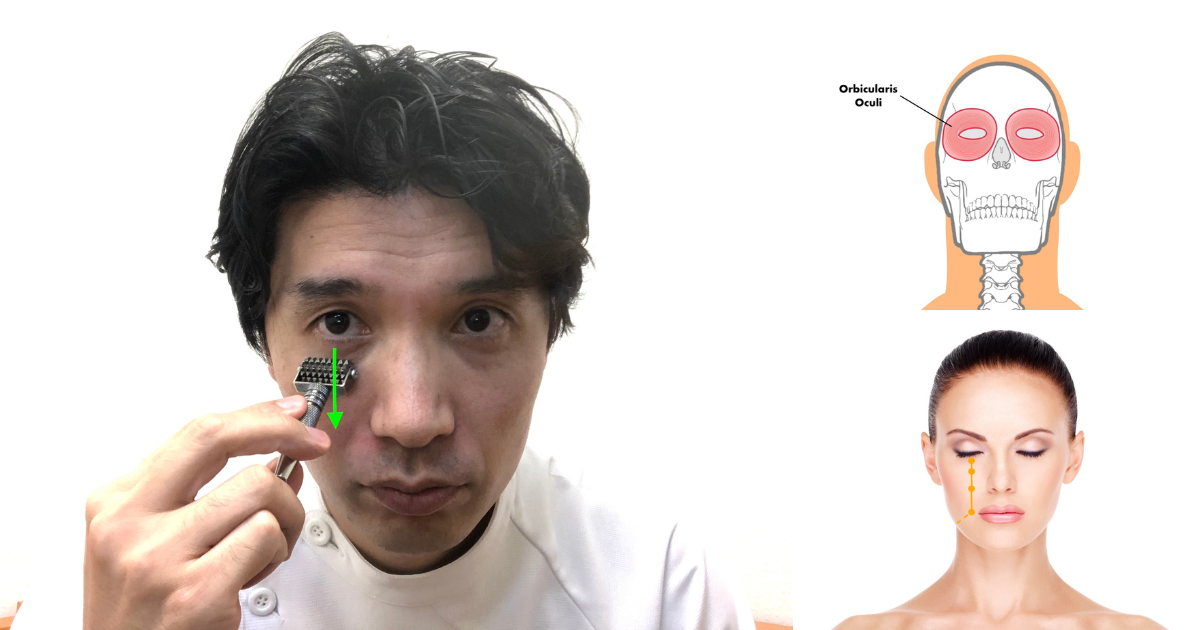
The sixth line in the face goes downward, which is below the eye level. It is known as the Stomach meridian, which has a downward pathway and helps the Orbicularis Oculi muscle to close down. If this muscle weakens, the lower eyelid prolapses, making one eye looks bigger than the other. That’s why it is important to stimulate this area to make the muscle works functionally. Place the facial roller just below the lower eyelid and stroke downwards until you reach the level of the nostrils. Apply enough pressure and repeat the motion 5-10 times.
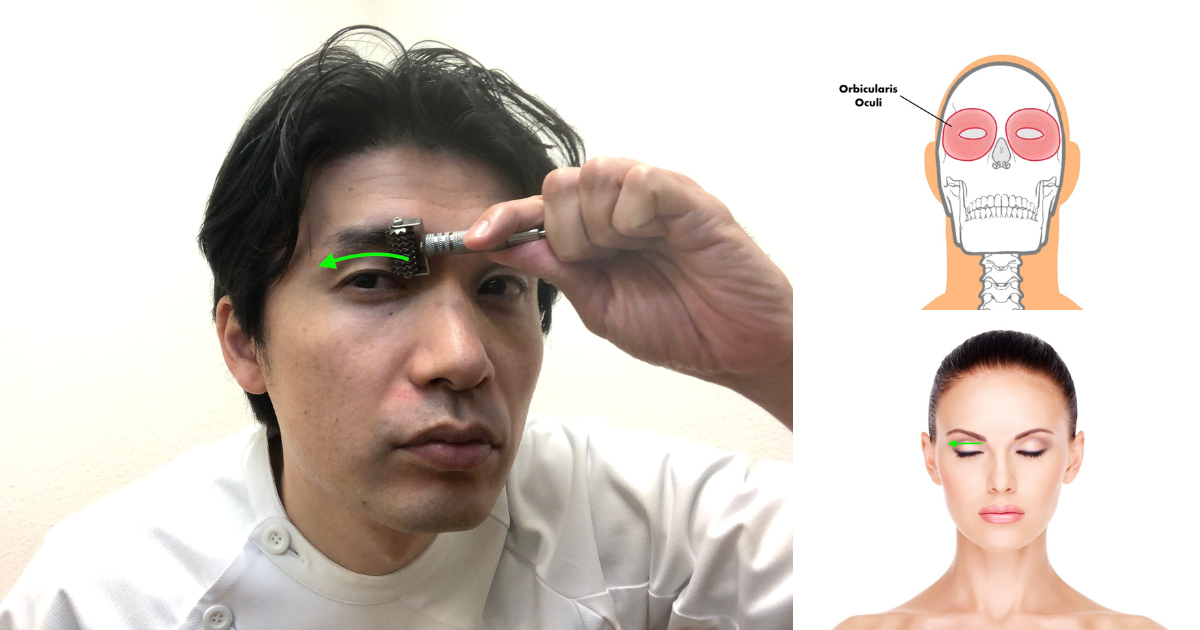
The seventh line runs horizontally just above the upper eyelid and is a part of the Orbicularis Oculi muscle that aids in shutting down the eye. Additionally, there are other muscles known as corrugator muscles that help to move the eyebrows. To stimulate these muscles, gently stroke sideways from inside to outside the affected area for 5 to 10 times. However, be careful not to apply too much pressure as it may harm your eye. Remember, the target of this stroke is your eyelid and eyebrow, not your eye. So, please stroke for 5 to 10 times.
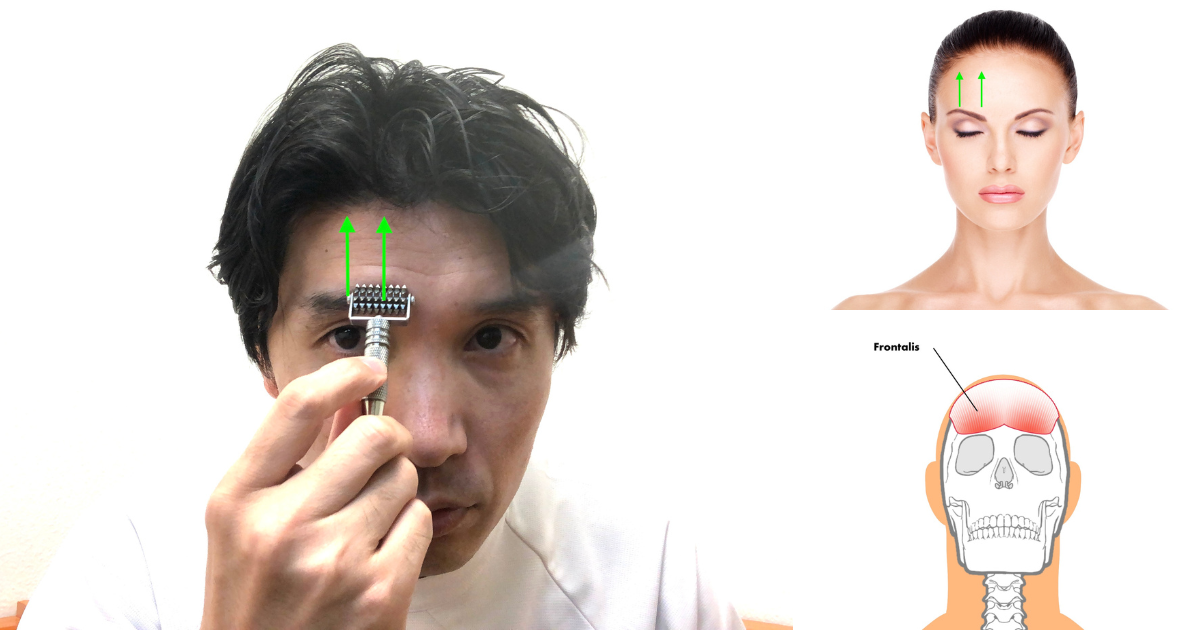
There are 2 lines above your eyebrow help move your forehead muscles functionally, which is incredibly important if you have Bell’s Palsy. The frontalis muscle, responsible for forehead wrinkles, often doesn’t move when you’re affected by the condition. These two lines can make a big difference, with one starting at the corner of the eyebrow and going upward 5 to 10 times, and the other from the center of your eyebrow and going upward 5 to 10 times.
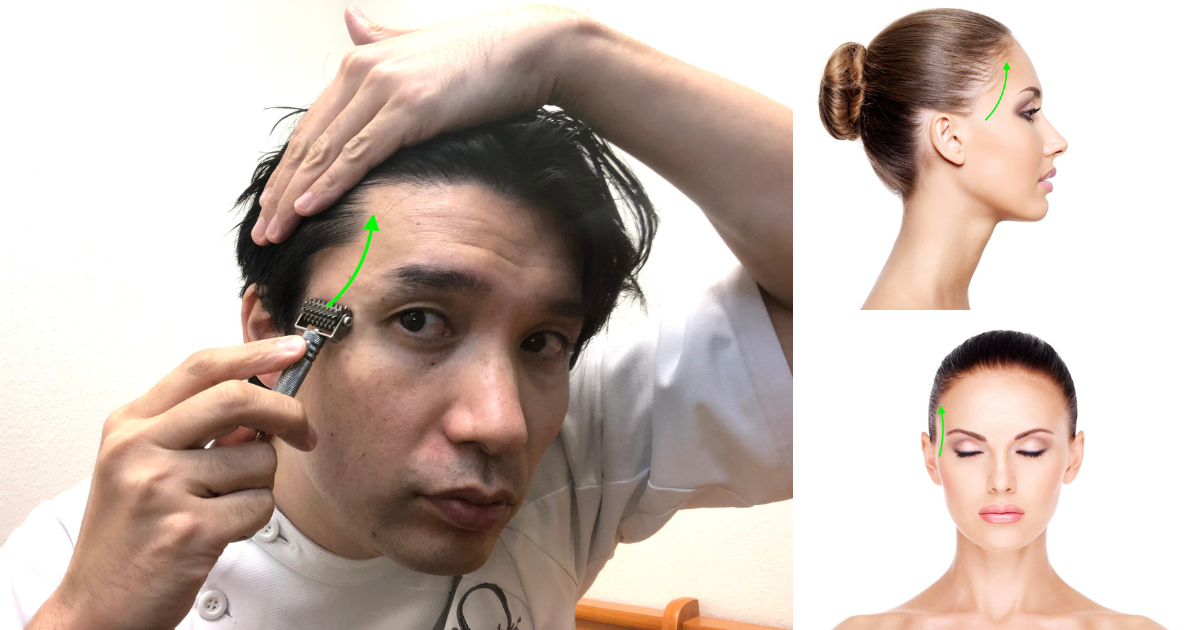
The ninth line is located on the temporal area of your head. This area is connected to the facial nerve temporal branch pathway that extends from the base of your ear to your eye and forehead. Additionally, the stomach and gall bladder meridian pathways also run up to the lateral side of your head from the temporal area, making it a crucial pressure point. So, it is highly recommended to stroke upward on the temporal area for 5 to 10 times.
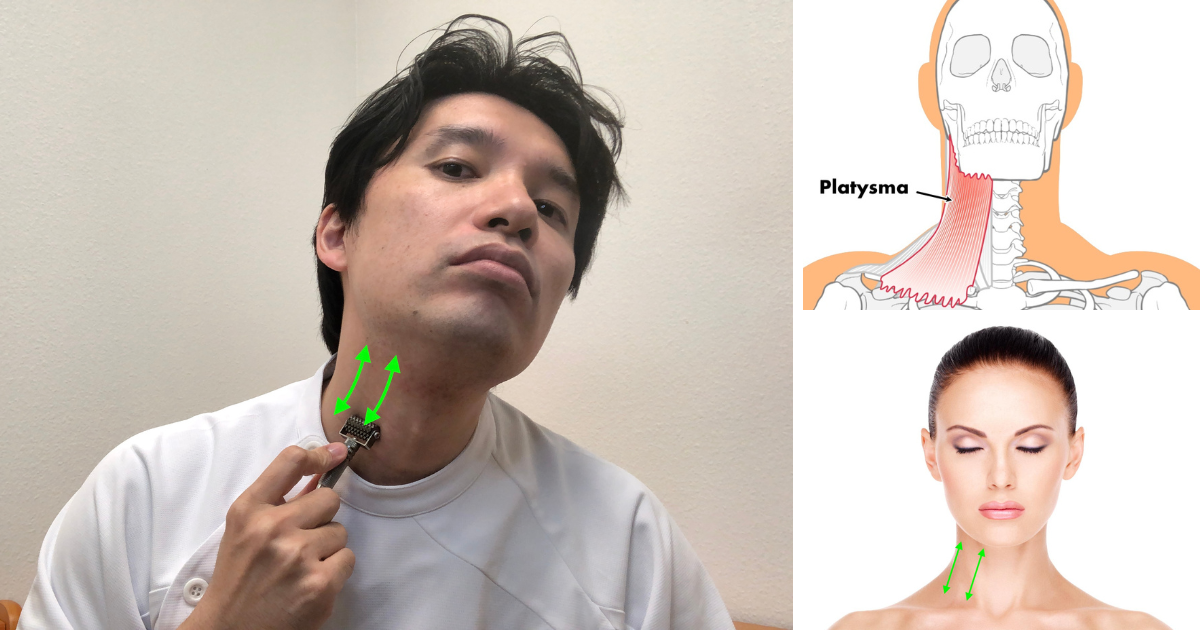
Don’t forget the last step of the facial stroking exercise, which involves stroking your neck. This exercise targets the platysma muscle, a crucial muscle that controls mouth movement and is attached to both the corner of your mouth and collarbone. By moving your mouth downward, you’re utilizing this muscle. However, if Bell’s Palsy strikes, you could lose the function of this muscle, which is why it’s important to stimulate it before it becomes inactive. To ensure you don’t lose this muscle, stroke your neck up and down 5 to 10 times.
It can be highly beneficial to perform this exercise every day, as it may accelerate your healing process and help you avoid being affected by permanent symptoms that can last up to 15%. As previously mentioned, Bell’s Palsy is a disease that is a race against time. Therefore, the earlier you take care of it, the higher the chances of healing quicker and faster. For a more proactive approach, you may want to consider alternative treatments such as acupuncture, which can help speed up your natural healing ability.
We'll be happy to answer your questions.
Certainly. Acupuncture has proven to be highly effective in treating Bell’s Palsy. During the initial acupuncture session, we assess your facial and muscle movements. If you are experiencing difficulty closing your eye or moving your mouth, our treatments will focus on reducing inflammation and swelling, as well as restoring movement in your face. Numerous studies have shown that acupuncture is highly practical in reducing pain and inflammation, as it can stimulate the body to release its natural painkillers.
Receiving acupuncture treatment for Bell’s Palsy as soon as possible is crucial for a better prognosis. Unfortunately, some patients delay treatment for months or even years after the initial onset, resulting in more complex and longer recovery times. Even then, there’s no guarantee of complete recovery.
Acupuncture is a highly effective treatment method that follows a simple rule when it comes to frequency. To get the most effective results, acute and new conditions require more frequent visits. Conversely, chronic and old conditions can benefit from widespread treatments. For example, if you just have acute Bell’s palsy, you will benefit from 2-3 treatments per week. On the other hand, chronic cases will only require one visit per week. Trust your acupuncturist to prescribe the right frequency for your condition and experience the benefits of acupuncture for yourself!
If you or a loved one was diagnosed with Bell’s Palsy and want to learn more about Acupuncture and whether it’s appropriate for your case, send us a message through our contact page. Thank you for taking the time to read this blog post! I appreciate your interest and hope to see you again for future posts.
We understand this can be a lot of information and overwhelming: if you are looking for more support and answers, set up a free consultation with our Bell’s Palsy Specialist, Satoru Ozawa. Share your story, get your questions answered, and learn how you can set yourself up for tremendous success in achieving a healthy life.
The following blogs discuss natural remedies, acupuncture, Chinese medicine, Chinese herbs, and tips for maintaining good health.
Living in Plano, you know the weather changes. Sudden storms and fronts cause barometric pressure migraines. Get help for the headaches and throbbing pain.
As a practitioner, my focus is on giving you the best tips for your health. But today, I want to share one that is at the heart...
Vestibular migraine: episodes of vertigo, dizziness, and imbalance without head pain. A neurological condition, not a simple balance issue.

Satoru Ozawa, L.Ac, ATC
hariQ acupuncture & herbs
Licensed acupuncturist, Certified Athletic Trainer and Chinese herbal specialist. With his 10 years of experience in Oriental Medicine, he will recommend the best natural Remedies, including Acupuncture, Chinese herbs, and health tips to relieve your suffering.